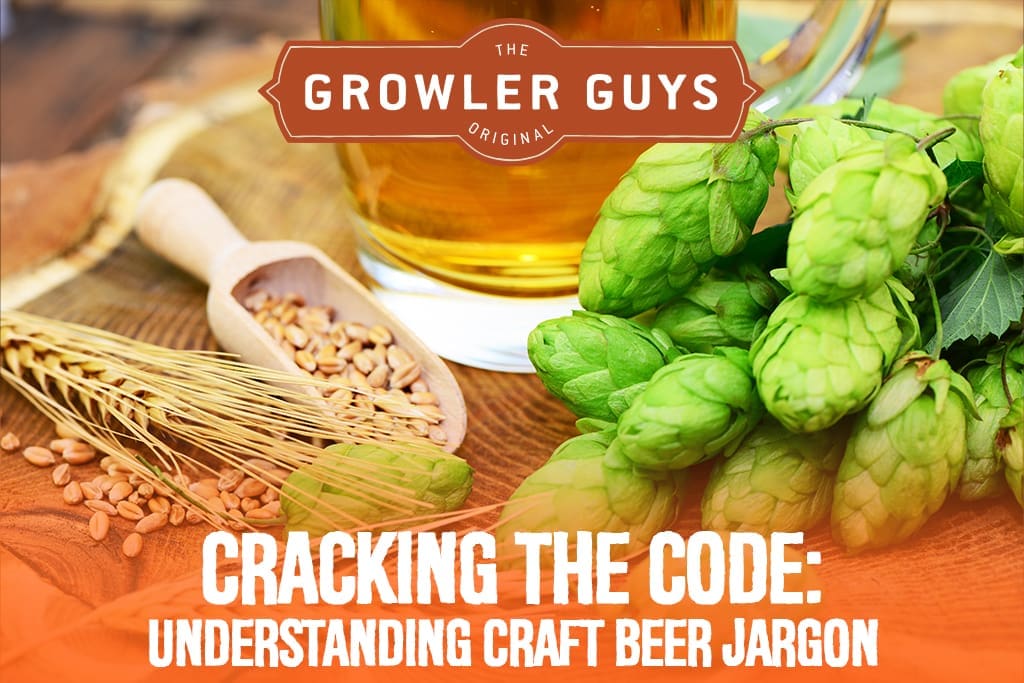 You may think of craft beer as the antithesis of corporate America, but that doesn’t mean it’s free of industry jargon. Terms like ABV, IBU, and SRM get tossed around, leaving many people wondering what any of it means. Here, we’ll break down some of the most common craft beer jargon so you can confidently navigate a tap list.
You may think of craft beer as the antithesis of corporate America, but that doesn’t mean it’s free of industry jargon. Terms like ABV, IBU, and SRM get tossed around, leaving many people wondering what any of it means. Here, we’ll break down some of the most common craft beer jargon so you can confidently navigate a tap list.
Seven Common Craft Beer Jargon Terms
1. ABV
One of the most commonly used acronyms in beer is ABV, which stands for Alcohol by Volume. This number tells you how much alcohol is in the beer as a percentage of the total volume. For example, a beer with 5% ABV means that 5% of the liquid is pure alcohol. Beers with a higher ABV are typically fuller-bodied and pack more of a punch, something to keep in mind if you’re planning a long drinking session.
2. IBU
IBU, which stands for International Bitterness Units, gives you an idea of how bitter a beer will taste. This number measures the amount of bittering compounds in the beer. Typically, the lower the number, the smoother and sweeter the beer. But because taste is subjective, some high IBU beers don’t feel bitter because the sweetness from the malts helps balance things out.
3. SRM
SRM is another entry in the craft beer jargon library. It stands for Standard Reference Method and is a scale used to measure beer’s color. The higher the number, the darker the beer. For example, a pilsner may have an SRM of 2 or 3, while a stout could be 30+. While the SRM doesn’t directly influence the beer’s flavor, the color can hint at specific taste characteristics, i.e., lighter beers tend to be crisper and more refreshing.
4. Dry-Hopped
Dry-hopping refers to the process of adding hops after fermentation. Unlike adding hops during the initial boil stage, dry-hopping enhances the beer’s aroma without significantly increasing its bitterness. It’s a common technique used in hop-forward styles like IPAs and pale ales to give them that bold, aromatic punch beer lovers want.
5. Imperial
Imperial is a craft beer jargon term used to describe beers stronger in alcohol and flavor than the standard version of a style. For example, an imperial IPA will have a higher ABV and a more aggressive hop profile than a standard IPA. Imperial beers are brewed to be rich and complex, meaning they’re meant to be sipped and savored rather than gulped.
6. Sessionable
Sessionable is used to describe beers that are easy to drink over an extended period (or session) without becoming overly intoxicated. These beers typically have lower ABVs of around 3% to 5%. They’re light-bodied, crisp, and well-balanced, perfect for social gatherings, backyard barbecues, or a casual night out.
7. Mouthfeel
Another common craft beer jargon term is mouthfeel. This refers to how the beer feels as you sip it – whether it’s a creamy, crisp, smooth, silky, or effervescent texture. For example, a stout may have a rich, velvety mouthfeel, while a lager might feel clean and bubbly. Mouthfeel is crucial in shaping whether a beer comes across as light and thirst-quenching or full and indulgent.
Put Your Knowledge to the Test at The Growler Guys
Whether you’re a casual sipper or an aspiring craft beer enthusiast, understanding the jargon behind the brews can help you appreciate every pour a little more. Put your newfound knowledge to the test at your local Growler Guys. Our extensive rotating taps list gives you plenty of opportunity to talk the talk – and drink the drink. Stop in for a pint, flight, or growler fill today, and cheers to informed sipping!

Reader Interactions